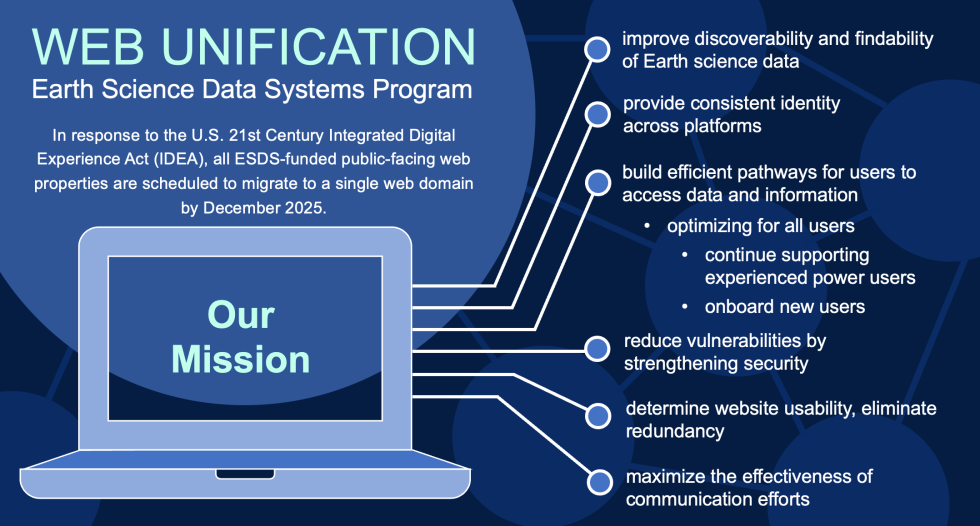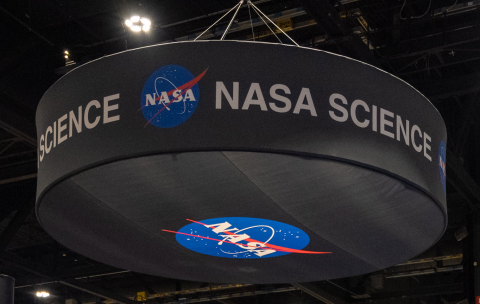Starting a conversation at the American Geophysical Union (AGU) Fall Meeting is easy—just ask any of the more than 25,000 attendees a simple question: Tell me about your science.
Scientists, researchers, and representatives from more than 100 countries and numerous space and Earth science organizations are in San Francisco, California, December 11 to 15 to share discoveries, highlight technical advances, and demonstrate data products.
The theme of the 2023 AGU meeting—Wide. Open. Science.—is a perfect encapsulation of NASA’s Earth Science Data Systems (ESDS) Program. Open science is a cornerstone of ESDS activities to ensure that the more than 100 petabytes (103.1 petabytes as of the end of November 2023) of NASA Earth science data are fully and openly available without restriction to global data users.
ESDS team members were talking about science even before the formal start of the meeting on December 11. A preconference workshop on Sunday, December 10, Getting Started with NASA Earth Science Data: From Beginner to Expert, showcased ESDS data, services, and tools for new data users to get them up to speed using NASA Earth science data.
The formal start of the AGU Fall Meeting kicked off with ESDS oral sessions and posters. One of the first presentations of the meeting described ways ESDS is making it easier to work with NASA Earth science data, and included descriptions of ESDS Data Pathfinders and the Web Unification initiative. Web Unification is the ongoing effort to migrate ESDS-funded public-facing web properties to a single web domain. The result will be more efficient use of data, better data security, and more streamlined pathways for finding data.
Acquiring information about user experiences and behavior using NASA Earth science data is an important element of Web Unification, and ESDS strategies to accomplish this are highlighted in a Poster Hall presentation. A similar poster highlights how NASA’s Earth Observing System Data and Information System (EOSDIS) is utilizing multiple tools and approaches to support existing data users and accommodate new users in the evolving open science paradigm.
The ESDS Interagency Implementation and Advanced Concepts Team (IMPACT) and NASA Distributed Active Archive Centers (DAACs) also have a full line-up of presentations, poster sessions, and Town Halls about the work and achievements of their talented teams (check out the AGU Online Program or the links at the bottom).
ESDS representatives, including data managers, creators, and experts, will be at the NASA Booth in the AGU Exhibit Hall (#531) throughout the meeting (look for the large circular NASA Science banner hanging from the ceiling). This year’s NASA Booth is larger and better organized to provide more space and an improved user experience. Presentations at the NASA Booth using the NASA Hyperwall will bring the latest science and discoveries to life (a complete schedule of Hyperwall presentations is at the Booth entrance).
Even if you’re not in San Francisco, you can still attend the meeting virtually and participate in the thousands of sessions to learn more about NASA Earth science data and how you can use these data. And if you are in San Francisco at the Moscone Center, the ESDS team looks forward to meeting you and finding out more about your science.

